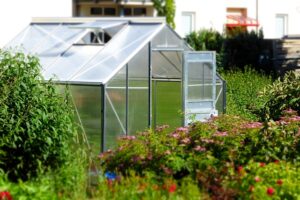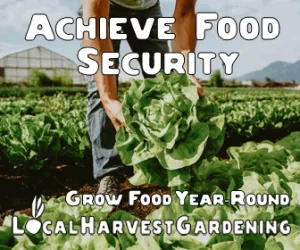March marks the beginning of spring, and it is a busy month for gardeners. As the weather warms up, there are plenty of tasks to keep you occupied in March gardening. From preparing your soil to sowing seeds and planting new plants, March is an exciting time for gardening enthusiasts.
In this article, we will cover 23 topics related to March gardening. So grab your tools and get ready to dive into the world of gardening.
1. Preparing Your Soil for Spring Planting
Before you start planting, it’s essential to prepare your soil properly. This involves clearing any debris, loosening the soil, adding compost or fertilizer, and testing the pH levels.
With a well-prepared soil, your plants will have the best chance of thriving.
2. Pruning Trees and Shrubs
March is an ideal month for pruning trees and shrubs before they start producing new growth. Trim off any dead or damaged branches, and shape the plants according to your desired size and form.
3. Starting Seeds Indoors
For plants that require a longer growing season, starting seeds indoors is a great way to get a head start. Some vegetables and flowers that can be started indoors in March include tomatoes, peppers, lettuce, and marigolds.
4. Cleaning and Sharpening Tools
Before the gardening season kicks into high gear, take some time to clean and sharpen your tools. Properly maintained tools will make your gardening tasks much more manageable.
5. Planting Cool-Season Vegetables
March is the perfect time to sow cool-season vegetables like broccoli, kale, carrots, and peas. These crops thrive in cooler temperatures and can tolerate light frosts.
6. Dividing Perennials
Overcrowded perennials can benefit from being divided in the early spring. This will help promote healthy growth and prevent diseases.
7. Mulching Flower Beds and Garden Paths
Applying a layer of mulch to your flower beds and garden paths helps retain moisture, suppress weeds, and improve soil health. Use organic materials like shredded leaves or bark chips for best results.
8. Planning for Your Garden
Take some time in March to plan out your garden for the upcoming season. Consider which plants you want to grow, where to plant them, and when to start sowing seeds or transplanting seedlings.
9. Managing Pests and Diseases
Inspect your garden regularly for any signs of pests or diseases. If caught early, these issues can be managed with natural methods such as handpicking or using organic sprays.
10. Composting
Starting a compost pile is an excellent way to reduce waste and provide nutrient-rich soil for your garden. Begin by collecting kitchen scraps, leaves, and grass clippings in a designated area. Turn the pile occasionally to speed up the decomposition process.
11. Caring for Houseplants
As the days get longer and brighter, your houseplants will start to wake up from their winter dormancy. Give them a good clean and check for any pests or diseases. Move them to a sunnier spot if needed and start fertilizing regularly.
12. Attending Gardening Workshops
Many gardening workshops are held in March to educate and inspire gardeners. Check your local community center or gardening store for upcoming events. You can learn new techniques, get advice from experts, and meet other passionate gardeners.
13. Harvesting Early Spring Vegetables
Some cool-season vegetables, such as peas, lettuce, and spinach, can be harvested in March if planted early enough. Be sure to check the maturity dates for each vegetable and harvest them at their peak ripeness for the best flavor.
14. Preparing for Frost
Even though spring is just around the corner, there is still a chance of frost in some regions. Keep an eye on the weather forecast and be prepared to cover tender plants with sheets or blankets if needed.
15. Planning for Summer Planting
Start planning and preparing your garden for summer planting. Consider crop rotation to maintain soil health, choose plants that will thrive in your region’s climate, and make a planting schedule to ensure a continuous harvest throughout the season.
16. Maintaining Garden Tools
Take some time to clean and sharpen your gardening tools before the busy growing season begins. This will save you time and effort later on, and ensure that your tools are working properly.
17. Creating a Compost System
Start composting organic waste from your kitchen and garden to create nutrient-rich soil for your plants. There are many different methods of composting, so choose one that fits your space and needs.
18. Exploring Native Plants
Consider incorporating native plants into your garden. They are well adapted to the local climate and soil conditions, making them low maintenance and beneficial for local wildlife.
19. Using Natural Pest Control Methods
Instead of using harmful chemicals, try using natural pest control methods such as companion planting, handpicking pests, and creating healthy habitats for beneficial insects and animals.
20. Experimenting with New Varieties
Don’t be afraid to try new varieties of vegetables in your garden. You may discover a new favorite or find that certain plants grow better in your specific climate and soil.
21. Documenting Your Garden Journey
Keep track of your garden’s progress by taking photos, keeping a journal, or creating a scrapbook. This will not only serve as a beautiful record of your gardening journey, but also help you learn and improve for future seasons.
22. Connecting with Other Gardeners
Join a local gardening club or online community to share tips, advice, and experiences with fellow gardeners. You may even make new friends who share your passion for gardening.
23. Taking Time to Relax and Enjoy Your Garden
Amidst all the hard work, don’t forget to take a moment to relax and enjoy your garden. Sit back, admire your plants, and soak in the fresh air and beauty of nature. After all, that’s what gardening is all about – cultivating a sense of peace and tranquility in our surroundings. Happy gardening! So, whether you’re a beginner or an experienced gardener, there are always new things to learn and try in the world of gardening. Keep exploring, experimenting, and most importantly, having fun with your garden! Happy gardening!
Conclusion:
So don’t be afraid to get your hands dirty and dig into the wonderful world of gardening. You never know what beautiful surprises await you in your own backyard. Enjoy the process, embrace the challenges, and reap the rewards of a flourishing garden. Happy gardening! With these tips and guidelines, you are now ready to start your journey towards creating a thriving and beautiful garden. Remember to stay patient, keep learning, and never give up – your green thumb will only get better with time. And most importantly, have fun and enjoy the journey! Happy gardening! And don’t forget to share your experiences, tips, and successes with fellow gardeners – after all, gardening is all about community and sharing knowledge. May your garden be bountiful and filled with joy! Happy gardening!


